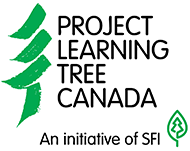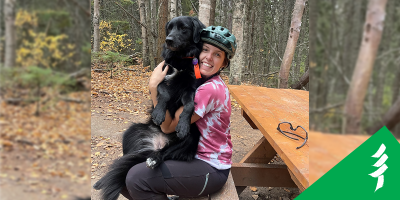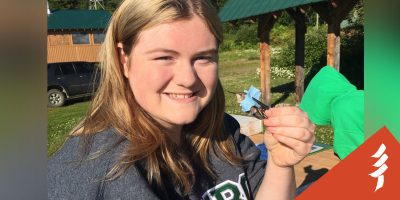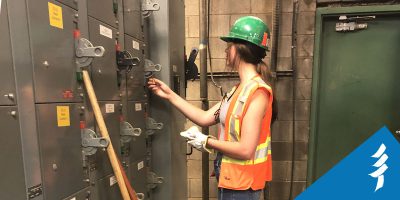GREEN JOB YOUTH SPOTLIGHTS
Growing Trees and Helping Ontario Fight Invasive SpeciesDecember 08, 2020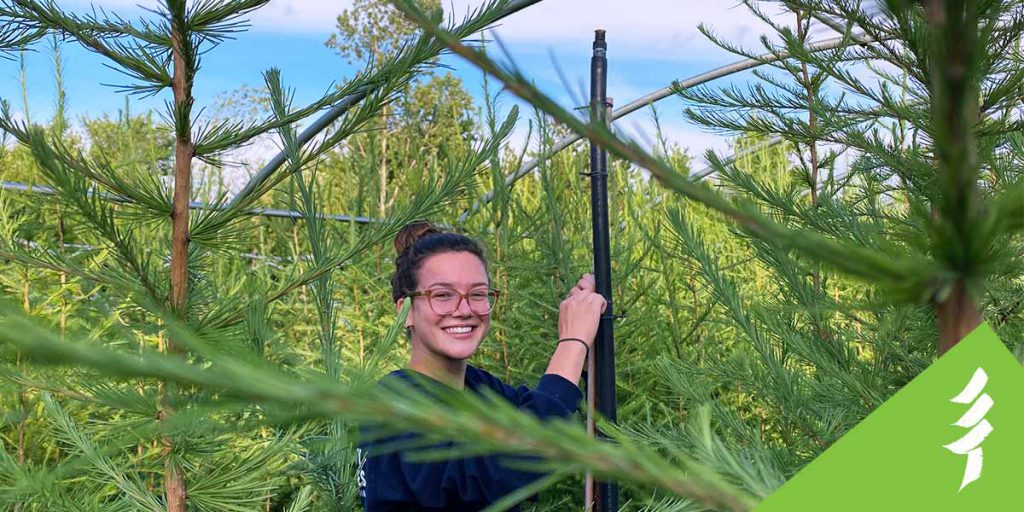 Moira Ijzerman, an Irrigation Technician with Baker Forestry Services, adjusting the irrigation system in a hoop house where she grew tamaracks. Baker Forestry Services is growing a few hundred different species of trees and shrubs, but they all have one important thing in common—they are all native species in Ontario. According to the Government of Ontario, there are about 1,200 alien plant species in the province. These plants were introduced by people into areas beyond their natural range. I was part of a team at Baker Forestry Services that helped grow native trees and shrubs so landowners can support healthy, diverse forests and landscapes. Conservation organizations like Forests Ontario, the Canadian Wildlife Federation, and LEAF (Local Enhancement and Appreciation of Forests) were among our customers. Invasive species are a real threatInvasive plants can reduce forest regeneration by competing with native tree seedlings, threaten species at risk, affect forest industry harvests, and undermine recreational and aesthetic values. Invasive species can also cost money to control. The City of Toronto expects to spend more than $70 million to manage the spread of the emerald ash borer beetle. Running the irrigation system at Baker was a big job. I would check valves and lines and record water usage. My morning rounds–as the sun rose–included a two-kilometer lap around the tree farm, which is located west of Brampton, Ontario. Outdoors and hands-onI love trees and the outdoors, so to plant and raise trees was a dream job. Working for four years spring through summer at Baker Forestry Services gave me a real appreciation for the seasons because I would start in spring snow and work until fall. The hands-on nature of my job was also a big plus. I spent time learning how to fix and operate tractors, RTVs, and generators. My job also helped me put some of the things I learned while earning my Bachelor of Science in environmental science into action. For example, I knew the theory of forest ecology, but now, I can also identify individual trees based on my on-the-job learning. Opportunities to do fieldwork as part of my degree at the University of Guelph helped me adjust to working on the Baker tree farm. Bringing academics and work togetherI was happy with this synergy between my degree and my job, together they remind me of the flexibility of the program I joined. Environmental sciences can really open your eyes to the range of green job opportunities there are out there. My studies included learning about agroforestry in the classroom and on a field trip to Ghana in West Africa. At a basic level, agroforestry means growing trees and mixed crops, and raising animals, together. My work at the tree farm gave me practical insights into the tree growing side of agroforestry. The idea of potentially studying agroforestry in graduate school appeals to me because it brings together forest ecology and sustainable agriculture. Whatever I end up doing, I would like to make a sustainable impact on the Earth by promoting best practices. I see my green job at Baker Forestry Services as a great launchpad for my dreams. PLT Canada’s Green Jobs program is supported in large part by our employer networks at the Canadian Parks Council and the Sustainable Forestry Initiative (SFI). Check out the PLT Canada Mentorship Program for Youth in Forestry and Conservation and PLT Canada’s Green Jobs E-Summits. PLT Canada is an initiative of SFI. |
